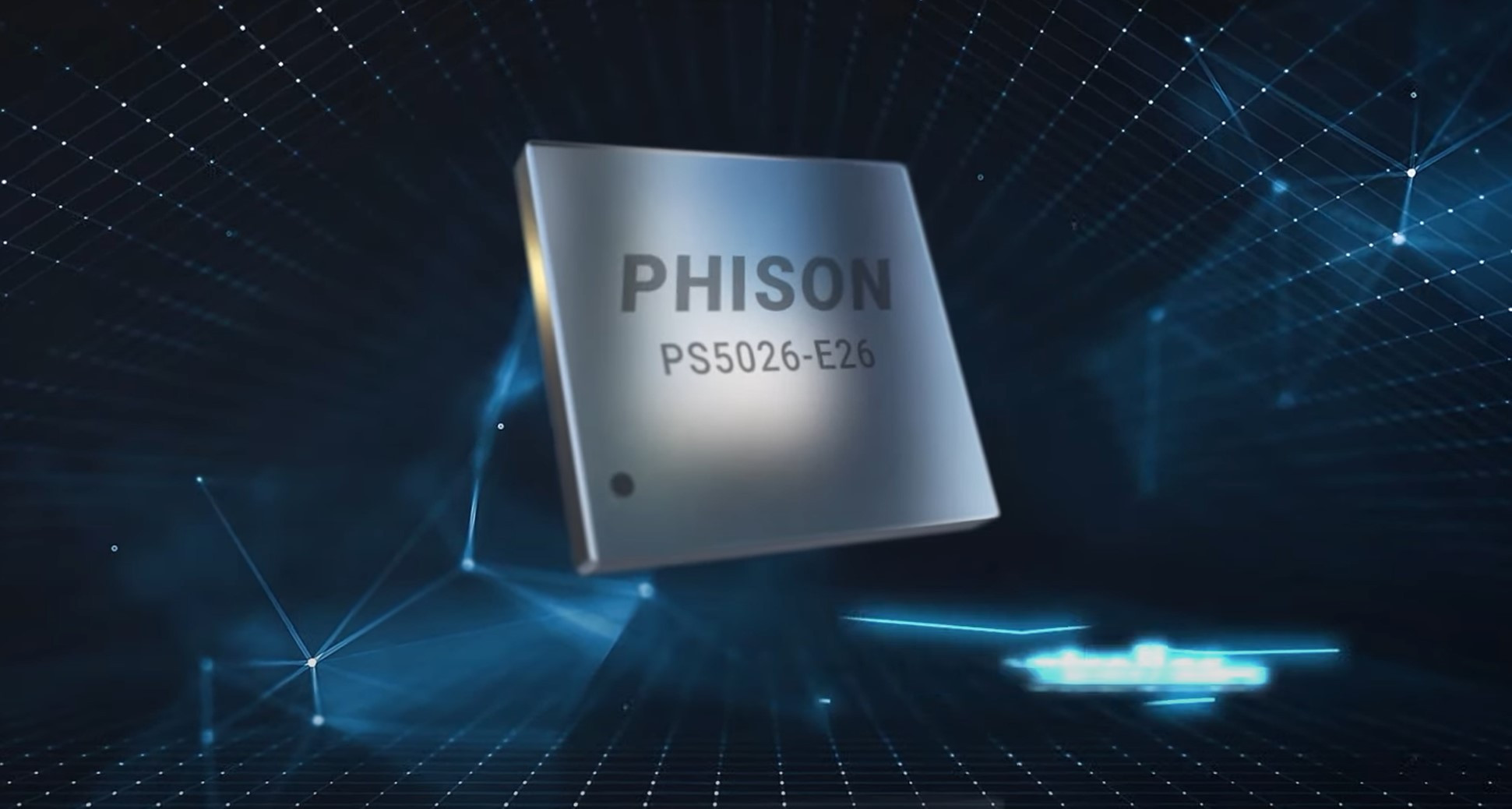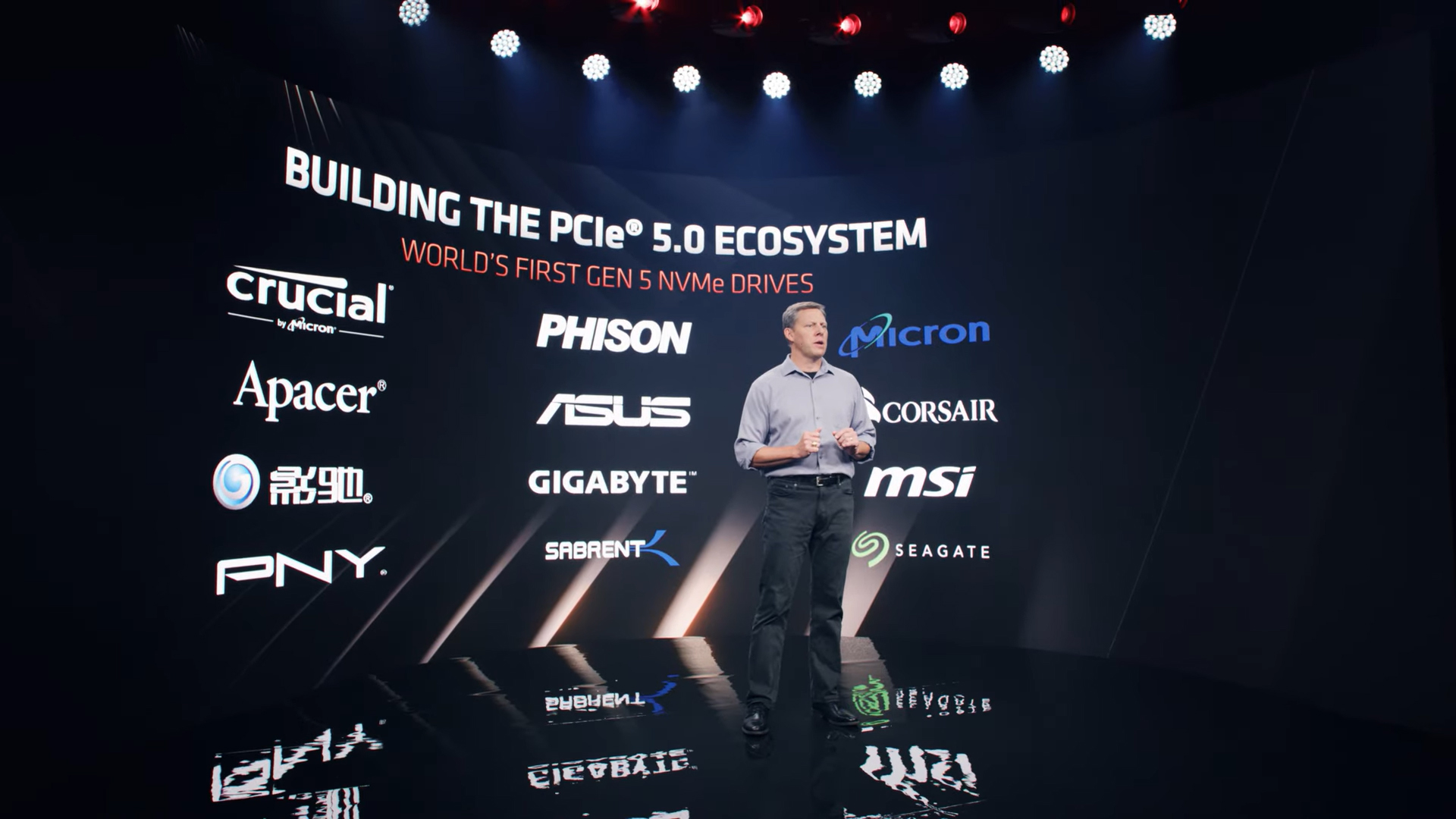Here's what Gen 5 NVMe SSDs mean for PC gaming in 2022
Never before seen sequential performance is coming

At Computex 2022, Apacer announced its Gen 5 NVMe SSDs promising sequential performance of up to 13,000MB/s reads and up to 12,000MB/s writes. That's nearly double what's currently available through the latest line of Gen 4 NVMe SSDs, and a clear indication that the extra bandwidth of PCIe 5.0, which is currently supported by the 12th Intel Core processors, some of the best CPUs for gaming, is delivering on speed.
Teased at the event were the Apacer AS2280F5 and the Zadak TWSG5, both Gen 5 NVMe SSDs supporting rates of up to 13,000 / 12,000 MB/s apiece. As expected, both models were shown with significantly chunky heatsinks to keep the internal temperatures down. However, little is known at this point as to what motherboard space will be needed to accommodate heat spreaders of such a size.
Both Gen 5 drives have been confirmed to be utilizing the latest NVMe 2.0 standard, which originally launched in June of last year, and boasts substantial across-the-board changes to what we've seen from NVMe 1.4 for the past three years.
What makes Gen 5 NVMe SSDs so much faster?
In the simplest of terms, PCIe 5 doubles the available bandwidth of what's currently possible through PCIe 4, with additional CPU lanes going to components such as your graphics card and SSD. If we take the rates claimed by Intel into consideration, which is the only chipset manufacturer offering PCIe 5.0 compatible processors right now, we can see that the theoretical maximum speed is in fact doubled (speed per lane).
Gen 4 topped out with a maximum of 16 GT/s whereas Gen 5 is quoted to be as capable as to offer up to 32 GT/s. Essentially, with double the throughput available, your components have much more available data to take advantage of. With games continuing to demand much larger file sizes and VRAM-intensive textures in the wake of advancements like the DirectStorage API, you're going to need all the available bandwidth you can get to keep the loading times down and the frame rates consistent.

For Gen 5 SSDs specifically, it comes down to which controllers are in use to make the most of the available sequential performance. If we cast our minds back to Gen 4, the hardware is generally capable of up to 8,000 MB/s, with many of the most popular NVMe drives on the market right now, such as the Kingston Fury Renegade, topping out at around the 7,300 MB/s mark. That's down to the Phison E18 controller, which you will find on many drives that operate in the field of 7,000 MB/s reads and up right now.
We know that Phison has been working on its new PCIe Gen 5 controller, the PS5026-E26. The company has claimed this will offer the sequential performance of up to 12,000 MB/s read and 11,000 MB/s write, with 4K random rates of 1,500K and 2,000K IOPS respectively, according to material obtained by TechPowerUp from earlier in the year. It's currently unknown as to which new drives will support the likes of Phison E26, but we do know that these claimed figures are a good benchmark to keep in mind with Gen 5 SSDs on the horizon.
Sign up to the GamesRadar+ Newsletter
Weekly digests, tales from the communities you love, and more

When can we expect Gen 5 NVMe SSDs to launch?
If the AMD Computex 2022 keynote is anything to go by, then we can generally expect the first mainline Gen 5 NVMe SSDs to launch between September and December 2022. The 'Fall' date was given in relation to the launch of the company's newest Ryzen 7000 Socket AM5 processors, which have been confirmed to be PCIe 5.0 compatible.
At the conference, the Crucial and Micron's names were dropped as partners who would have Gen 5 NVMe drives ready at launch alongside Zen 4. What's more, the Phison logo was present among several other notable partner logos, including that of Gigabyte, Corsair, Sabrent, and Apacer.
It's worth remembering that we've already had a brief look at what's possible on the platform earlier in the year. Back in January, TeamGroup announced the T-Force Cardea Gen 5 SSD which also promised rates of up to 13,000 / 12,000 MB/s read and write, too.
Whether you're running an Alder Lake Intel system or waiting for the Ryzen 7000 line to launch before upgrading to PCIe 5.0, one thing is certain: with games being more demanding than ever before on the platform, the added bandwidth will allow for performance capabilities never conceived before as we head into 2023.
Gear up for the latest in Gen 5 compatibility with the best PC cases, best RAM for gaming, and best gaming monitors.

Aleksha McLoughlin served as the Hardware Editor for GamesRadar from June 2021 until August 2022. Her main area of expertise was the PC gaming platform, which comprised buying guides, features, reviews, and news coverage on components and prebuilt machines. She was also responsible for gaming chairs and storage. She now works on a freelance basis while studying to become a university lecturer specializing in English for foreign territories. Prior to joining GamesRadar, she wrote for the likes of Expert Reviews, The Rory Peck Trust, No Clean Singing, Vinyl Chapters, and Tech Spark while also working with the BBC.


